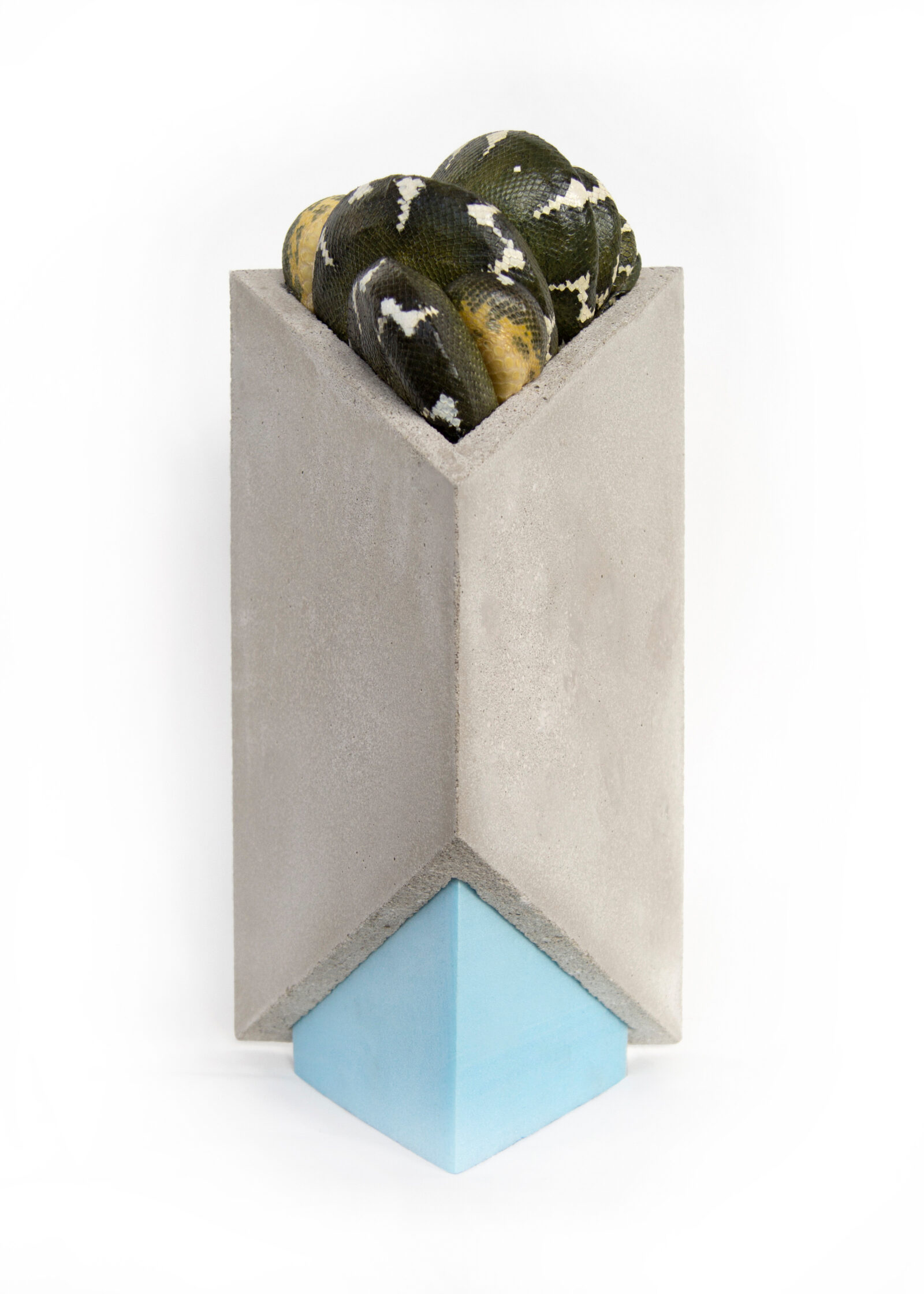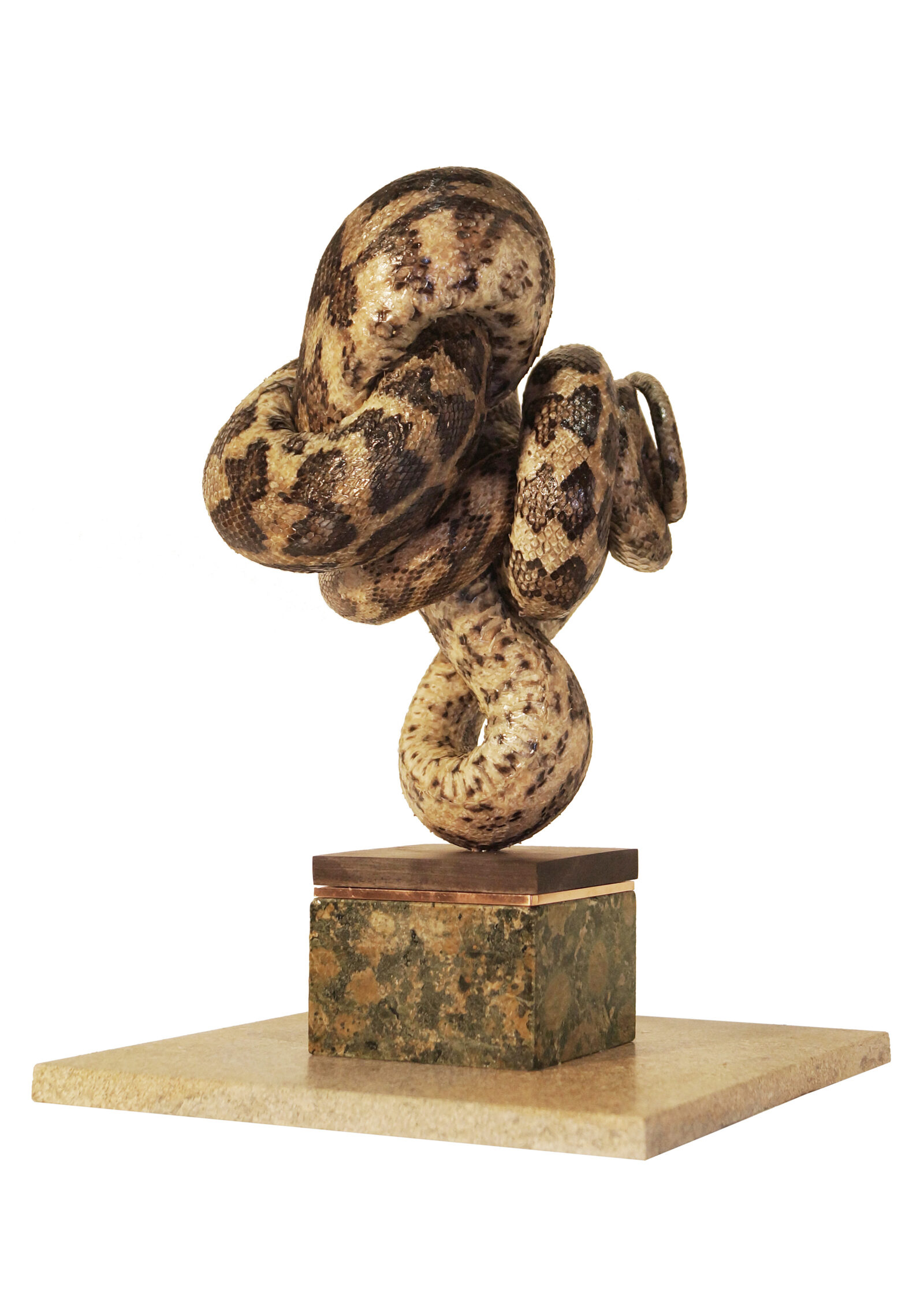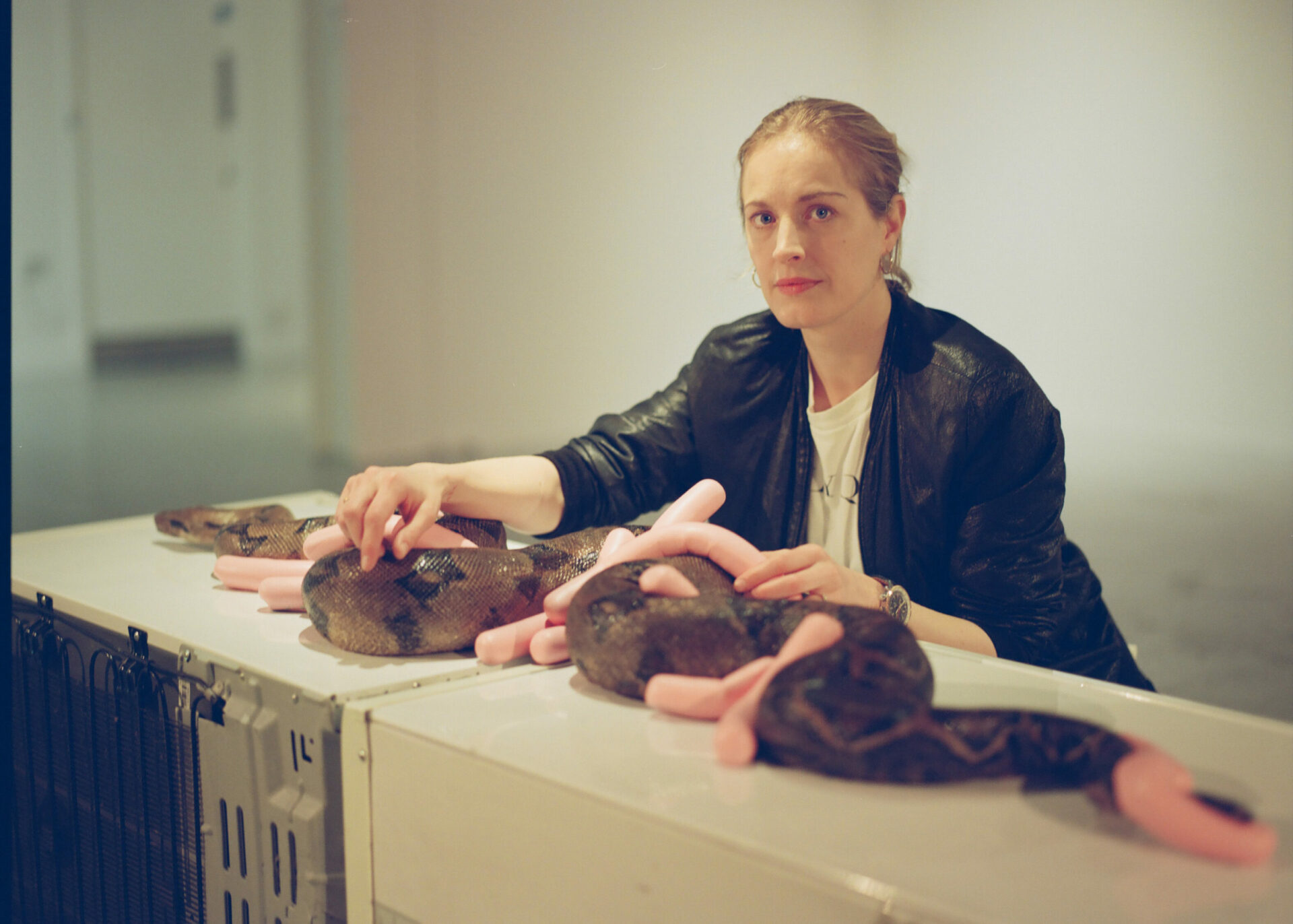

Taught how to preserve animals under the tutelage of Scottish taxidermist George Jamieson, London-based artist Polly Morgan (b.1980) creates sculptures that subvert and dismantle taxidermy traditions. By placing animals in unexpected and surreal set-ups, Morgan’s work plays with juxtaposition and contrast to encourage the viewer to challenge their preconceptions and re-think the notion of beauty.
In this interview, Morgan shares the trajectory of her career, the philosophy behind what she does and, perhaps surprisingly, her disinterest in death and the macabre. Discussing the use of flesh as material, suspending the transient moment, and the importance of paying attention to instinct, she reflects on the past and looks positively towards the future.
YOU TRAINED WITH TAXIDERMIST GEORGE JAMIESON AND HAVE DEVELOPED TRADITIONAL TAXIDERMY SKILLS INTO A FULLY-FLEDGED SCULPTURAL PRACTICE. HOW DID YOU GET STARTED AND WHAT WAS YOUR TRAJECTORY INTO THE ART WORLD?
PM It was quite an organic start in that I was trying out various materials in my early 20s. I used a bit of clay, made ink drawings and did a course in photography, before settling on taxidermy. As it was a pretty untapped medium at the time, I found there was more untrodden ground and scope for me to create original work.
YOU HAVE SAID IN THE PAST THAT THE FIGHT TO STAY ALIVE IS MORE TERRIFYING TO YOU THAN DEATH, WHICH IS ULTIMATELY A PEACEFUL STATE. BY REMODELLING DEAD ANIMALS INTO TAXIDERMIC STATES YOUR WORK CREATES LIFE IN DEATH. CAN YOU SAY A BIT MORE ABOUT YOUR INTEREST IN THIS CONDITION?
PM I’m not interested in reanimating or playing God, or even really in death. It is the prospect and approach of death that I am afraid of.
Once it has occurred, there is nothing to be afraid of. You are left with a dead body, which is just matter, like clay or stone. There is no fear or pain involved in the skinning and mounting of a dead animal. I think of it as logistics; the animal must die in order for me to begin work on it, this doesn’t mean the work is about death. In fact, it is increasingly abstract and more about form, colour and texture than anything else.
YOUR WORK IS BOTH TECHNICALLY COMPLEX AND CONCEPTUALLY COMPELLING. IS IT IMPORTANT FOR YOU TO ACHIEVE BALANCE BETWEEN THE TWO?
PM I think as I’ve become more secure in my work it is less important for things to be technically complex. If the work requires it then it’s fine, but often the simplest things work best. I went through a phase of always making casts of things I wanted to use: a scrap of wood or a sheet of paper, rather than using the actual material itself. In hindsight, I think this was an insecurity over complicating sculptures that would have been as (or more) effective made using the original material.
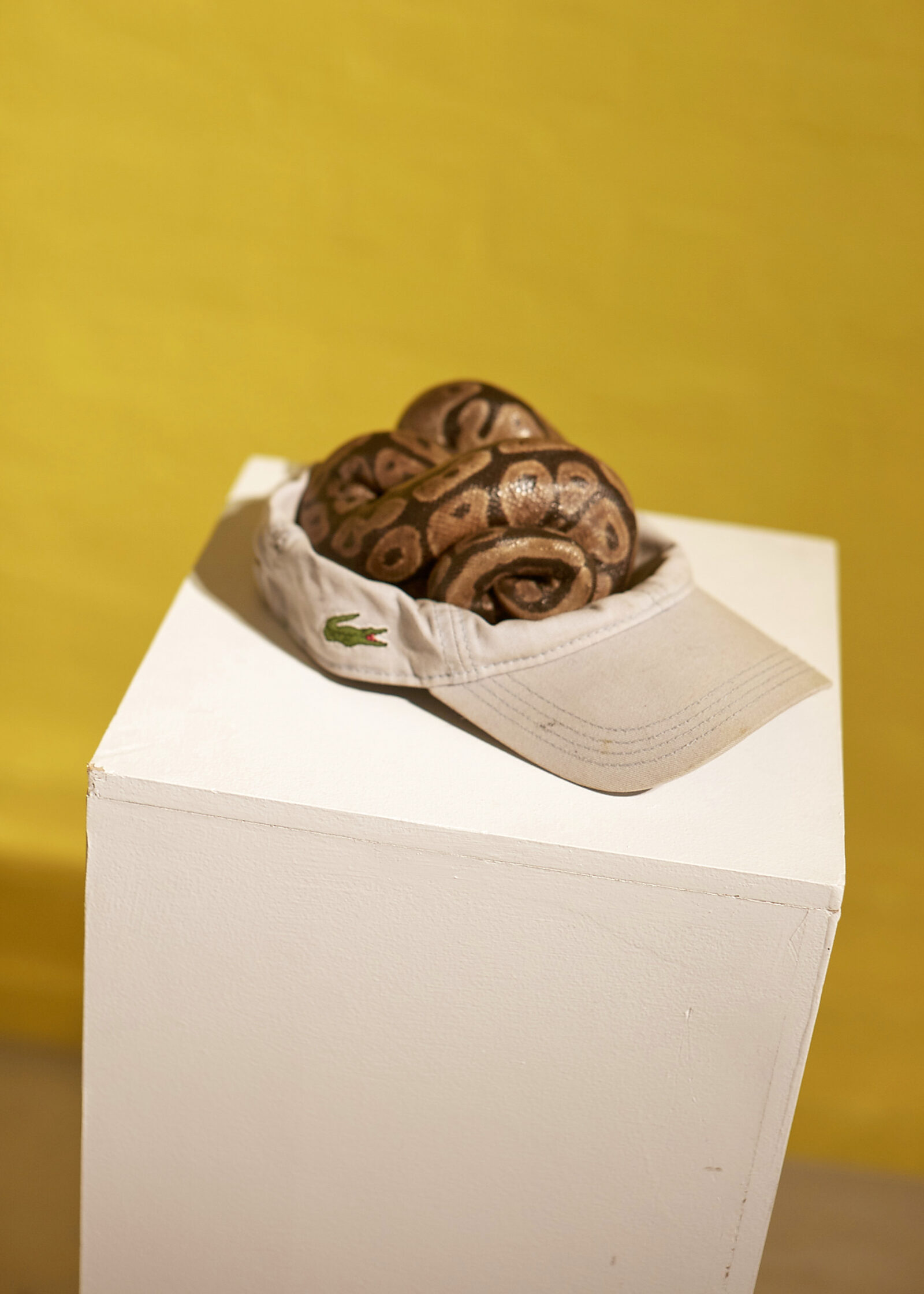
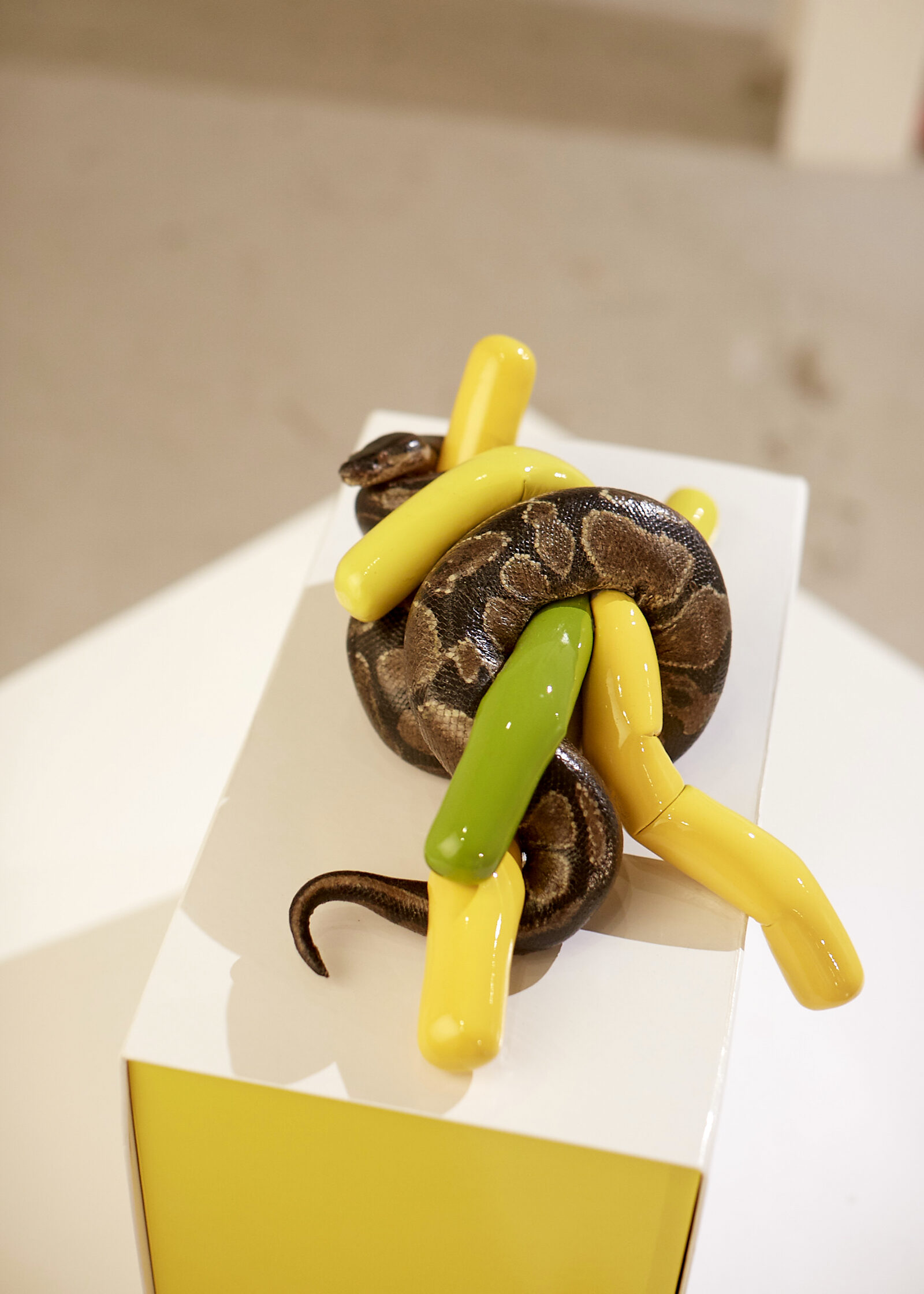
BY COMBINING REANIMATED CREATURES WITH INANIMATE OBJECTS IN UNLIKELY SITUATIONS, YOUR WORK PLAYS WITH THE NOTION OF THE UNCANNY AND THE SURREAL. WHAT ABOUT THESE THEMES INTRIGUES YOU?
PM What I always loved about taxidermy is the way it suspends a transient moment indefinitely. A dead bird only lies lifeless for so long before becoming infested with new life in the form of maggots and finally decomposing altogether. Taxidermy is like a three-dimensional, tangible, photograph; it holds on to that moment for as long as you look after it. There is an uncanniness to the trickery involved. I have always liked to juxtapose elements that jar with each other as it’s a way of forcing you to look anew at something you have preconceptions about.
This is why I liked using animals that were typically considered vermin because once they’re taken out of context, they can be considered without prejudice and judged on their beauty. I am working with veneers at the moment and I love the coupling of something expensive and commonly considered attractive – such as marble – being placed on top of strand board, which has a beauty that is overlooked due to its cheapness and ubiquity.
I WONDER IN WHAT WAY, IF ANY, YOUR PRACTICE HAS AN EFFECT ON YOUR OWN SENSE OF MORTALITY? CAN YOU SPEAK ABOUT HOW HANDLING DEAD ANIMALS IN THIS WAY MAKES YOU RE-THINK WHAT IT MEANS TO BE A BODY?
PM The only impact I can think of is that seeing a cadaver without skin gives you a very clear illustration of the health of the body. The sight of a lean, muscular animal has made me think more about what is going on under my skin and of the impact that exercise, for example, has on the body. Other than that, I quickly came to look upon the body as material and not to dwell on the fact it was alive. If I didn’t know the animal in life and am not present at the point of death then I don’t think of life and death.
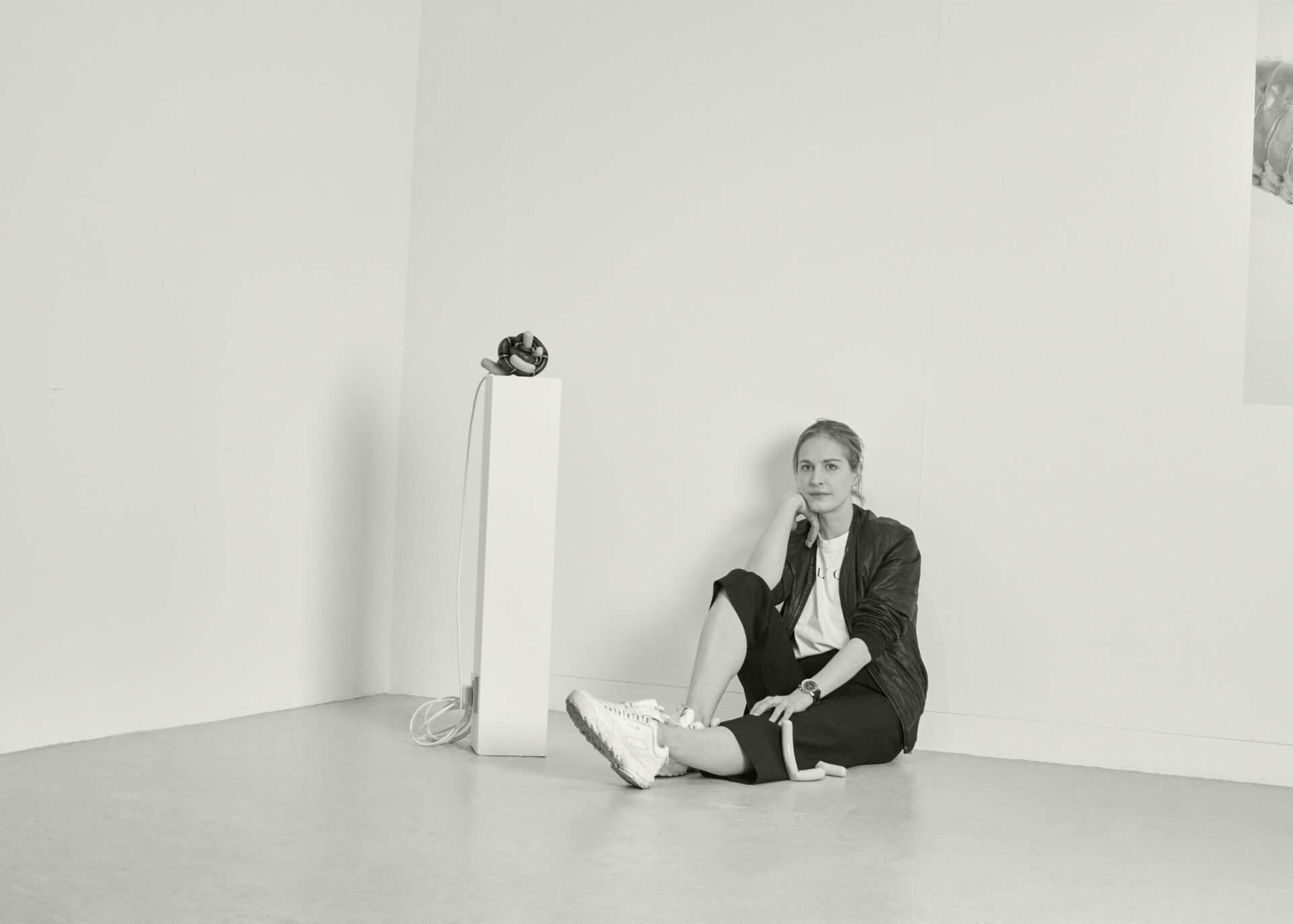
BY COMBINING REANIMATED CREATURES WITH INANIMATE OBJECTS IN UNLIKELY SITUATIONS, YOUR WORK PLAYS WITH THE NOTION OF THE UNCANNY AND THE SURREAL. WHAT ABOUT THESE THEMES INTRIGUES YOU?
PM What I always loved about taxidermy is the way it suspends a transient moment indefinitely. A dead bird only lies lifeless for so long before becoming infested with new life in the form of maggots and finally decomposing altogether. Taxidermy is like a three-dimensional, tangible, photograph; it holds on to that moment for as long as you look after it. There is an uncanniness to the trickery involved. I have always liked to juxtapose elements that jar with each other as it’s a way of forcing you to look anew at something you have preconceptions about.
This is why I liked using animals that were typically considered vermin because once they’re taken out of context, they can be considered without prejudice and judged on their beauty. I am working with veneers at the moment and I love the coupling of something expensive and commonly considered attractive – such as marble – being placed on top of strand board, which has a beauty that is overlooked due to its cheapness and ubiquity.
I WONDER IN WHAT WAY, IF ANY, YOUR PRACTICE HAS AN EFFECT ON YOUR OWN SENSE OF MORTALITY? CAN YOU SPEAK ABOUT HOW HANDLING DEAD ANIMALS IN THIS WAY MAKES YOU RE-THINK WHAT IT MEANS TO BE A BODY?
PM The only impact I can think of is that seeing a cadaver without skin gives you a very clear illustration of the health of the body. The sight of a lean, muscular animal has made me think more about what is going on under my skin and of the impact that exercise, for example, has on the body.
Other than that, I quickly came to look upon the body as material and not to dwell on the fact it was alive. If I didn’t know the animal in life and am not present at the point of death then I don’t think of life and death.
